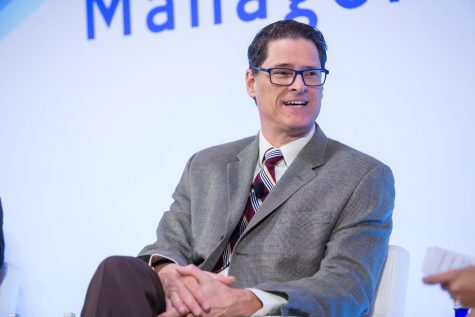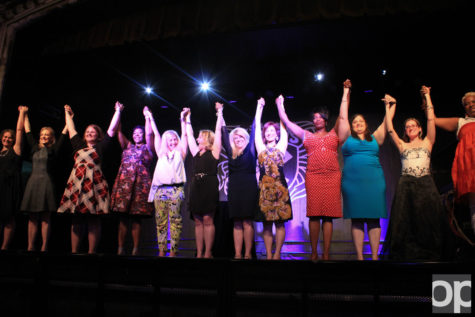Blueprint for hate
History came alive on Tuesday, March 10 at the “Blueprint for Hate: The Enduring Legacy of the ‘Turner Diaries’” lecture series put on by the history department. The event attracted not only OU students and faculty, but community members from outside the university as well.
History professor Ian Greenspan, Ph. D, gave a presentation on the long-lasting issue of white terrorism.
Todd Estes, chairman of the history department, explained how the lecture series, “History Comes Alive,” is in its 11th year. He said that the program is already in its planning stages for next year, as well.
“What [the history department] is researching is of value and interest to a general audience,” George Johannessen, one of the attendees, said. “One evening a month is worth it.”
The “Turner Diaries,” a book written by William Pierce, is “poorly written nonsense,” according to Greenspan.
“The book was released as his white supremacist organization, the National Alliance, came off of the ground,” Greenspan said. “It’s not terribly convincing. It’s a dystopian novel, but he’s no George Orwell.”
“Pierce’s book provides a very inclusive outlook that appeals to vast numbers on the Radical Right and continues as essential reading for a wide range of anti-government individuals and groups,” Greenspan explained.
“It’s deceptively simple, yet extremely multi-layered and a sophisticated text,” Greenspan said. “Journalists see it as neo-Nazi ideological manifesto and law enforcement sees it as a technical handbook of terror.”
But the book wasn’t just written out of racist sentiment. Greenspan said that the book “called light to the liberal changes in the ‘60s and ‘70s and that Pierce thought of these as triggers to a war.”
The book inspired the terrorist acts of Joseph Paul Franklin, The Silent Brotherhood, Timothy McVeigh, John William King and Anders Breivik. In all cases, these acts were committed on an individual basis, which Greenspan said was the most dangerous part of this book.
Greenspan called students to action at the end of his lecture.
“We need to recognize the danger of this text and what it can do to readers. We might be surprised at who has read it.”







